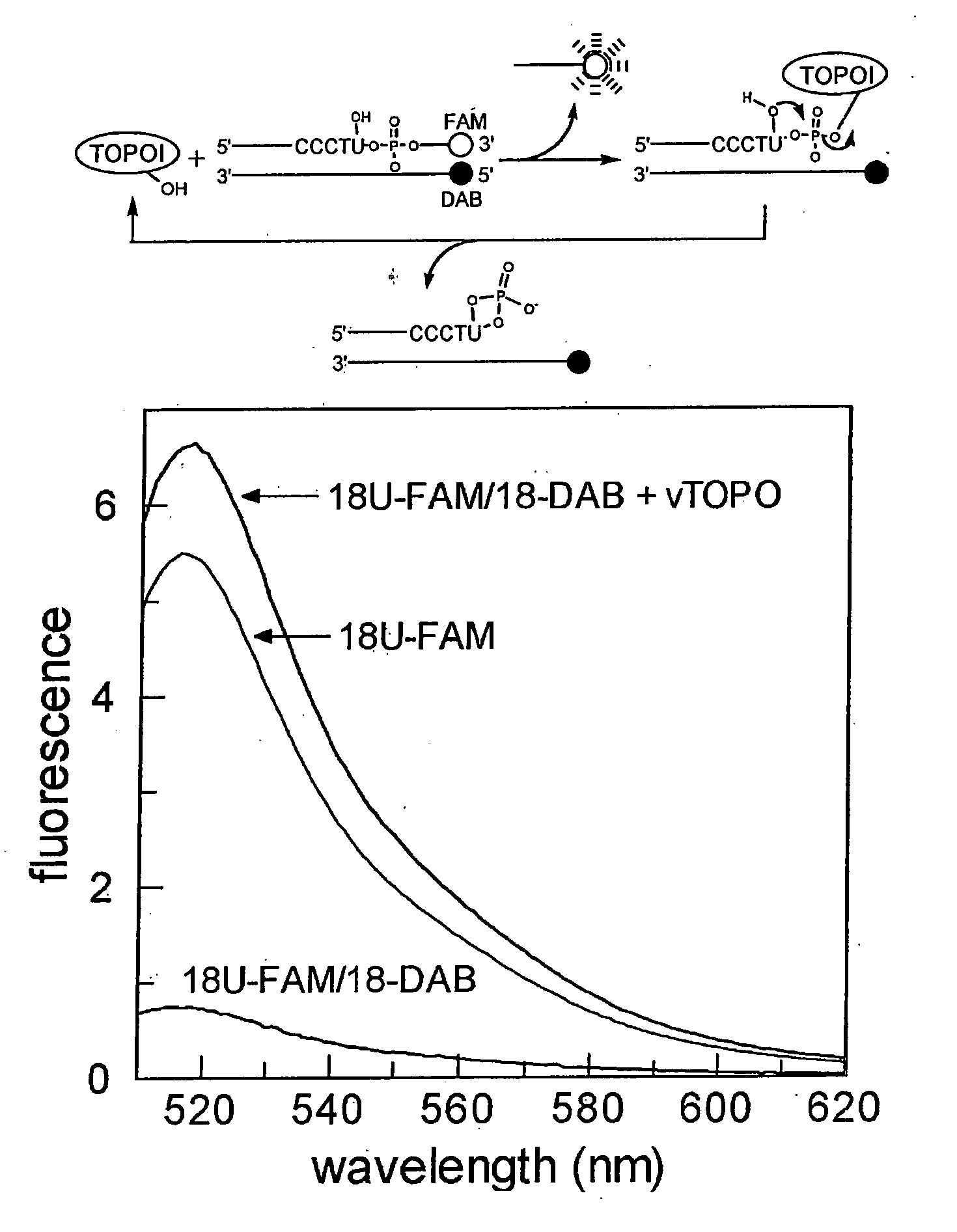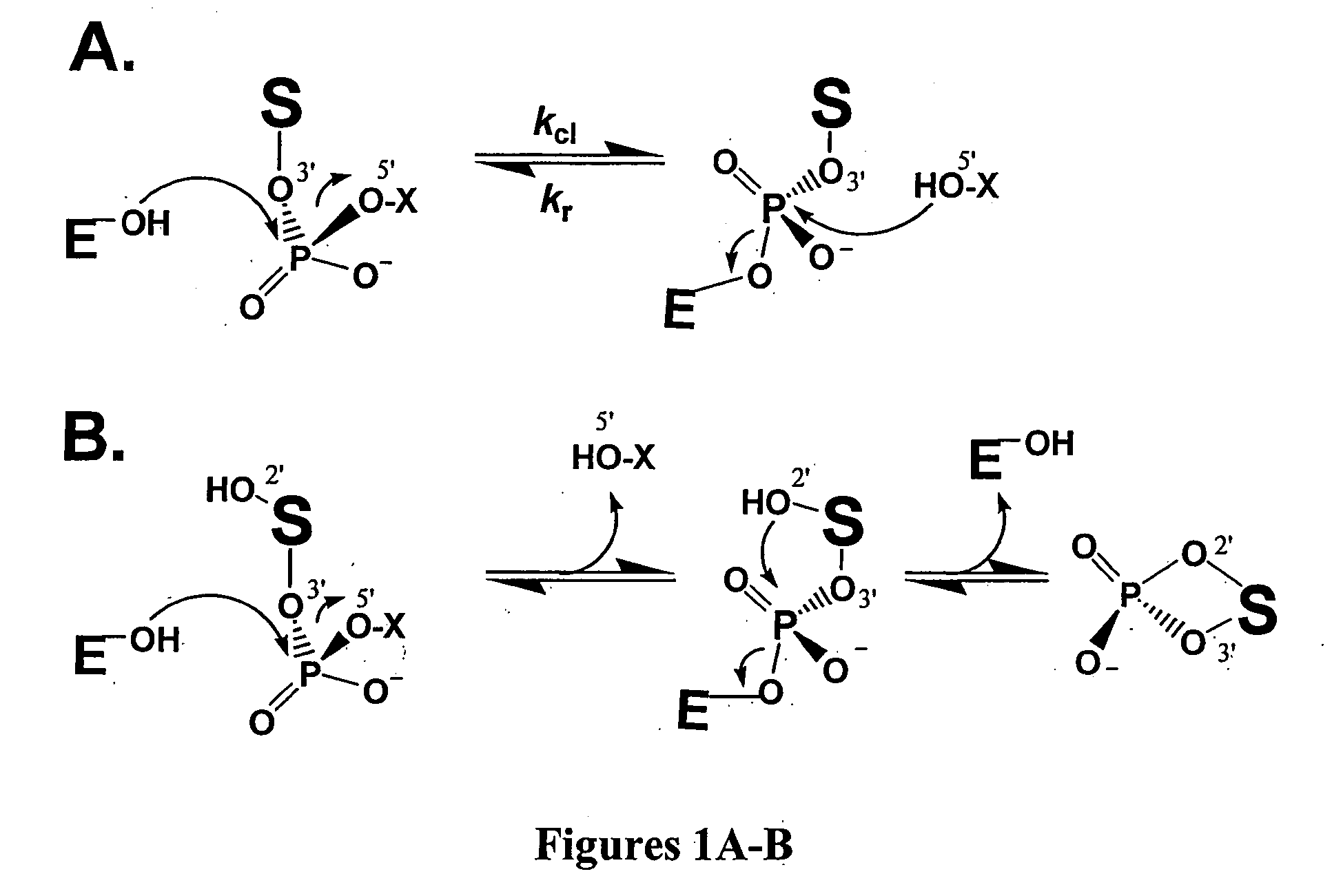Assays for identification of topoisomerase inhibitors
a topoisomerase inhibitor and inhibitor technology, applied in the direction of biological material analysis, drug composition, nitro compound active ingredients, etc., can solve the problems of cumbersome and unsuitable detailed mechanistic studies, inability to investigate the dna topoisomerase using standard steady-state kinetic methods, and inability to screen high-throughput inhibitors of these enzymes. , to achieve the effect of reducing the cleavage equilibrium (kcl), increasing the relig
- Summary
- Abstract
- Description
- Claims
- Application Information
AI Technical Summary
Benefits of technology
Problems solved by technology
Method used
Image
Examples
example 1
Materials and Methods
[0137] Enzymes and Plasmid DNA. The cloning and purification of wild-type and Y274F vaccinia topoisomerase has been previously described (13). The enzyme concentration was determined by UV absorbance using an extinction coefficient of 28,140 M−1cm−1 in a buffer containing 20 mM sodium phosphate pH 6.0 and 6 M guanidinium hydrochloride (13). Human topoisomerase was obtained from Sigma. The plasmid pUC 19 / AID was constructed from pUC19 by inserting the 600 bp gene encoding the enzyme activation induced cytidine deaminase (AID) into the restriction sites NdeI and HindIII.
[0138] RNA and DNA Substrates with Fluorescent Tags. The sequence of the 18 mer DNA / RNA substrate containing a single uridine ribonucleotide substitution for the 3′ thymidine residue of the consensus cleavage sequence is shown below, where FAM is 6-carboxyfluorescein,1 and DAB is the universal fluorescence quencher, dabcyl. For the DNA
18U-FAM / 18-DAB5′ CGTGTCGCCCTUATTCCG-FAM-3′3′ GGGAAGCGGGAATAA...
example 2
[0172] Using the assay described above, a chemical library was screened for the ability to inhibit human topoisomerase type 1B. Table 5 sets forth compounds identified as being inhibitors of human topoisorease type 1B.
TABLE 5Identified inhibitors of human type lB DNA topoisomerase%Inhibition% Inhibition ofNSCIn HTSplasmid supercoilChemical StructureNumberscreenRelaxationP6953100 @ 200 nM80% @ 100 nMP6954100 @ 10 nM100 @ 10 nMP6965100 @ 200 nM100 @ 1 μMP6970100 @ 100 nM100 @ 50 nMP6971100 @ 200 nM100 @ 1 μMP6982 50 @ 50 nM100 @ 50 nM
PUM
| Property | Measurement | Unit |
|---|---|---|
| excitation wavelength | aaaaa | aaaaa |
| excitation wavelength | aaaaa | aaaaa |
| emission slit widths | aaaaa | aaaaa |
Abstract
Description
Claims
Application Information
 Login to View More
Login to View More - R&D
- Intellectual Property
- Life Sciences
- Materials
- Tech Scout
- Unparalleled Data Quality
- Higher Quality Content
- 60% Fewer Hallucinations
Browse by: Latest US Patents, China's latest patents, Technical Efficacy Thesaurus, Application Domain, Technology Topic, Popular Technical Reports.
© 2025 PatSnap. All rights reserved.Legal|Privacy policy|Modern Slavery Act Transparency Statement|Sitemap|About US| Contact US: help@patsnap.com



